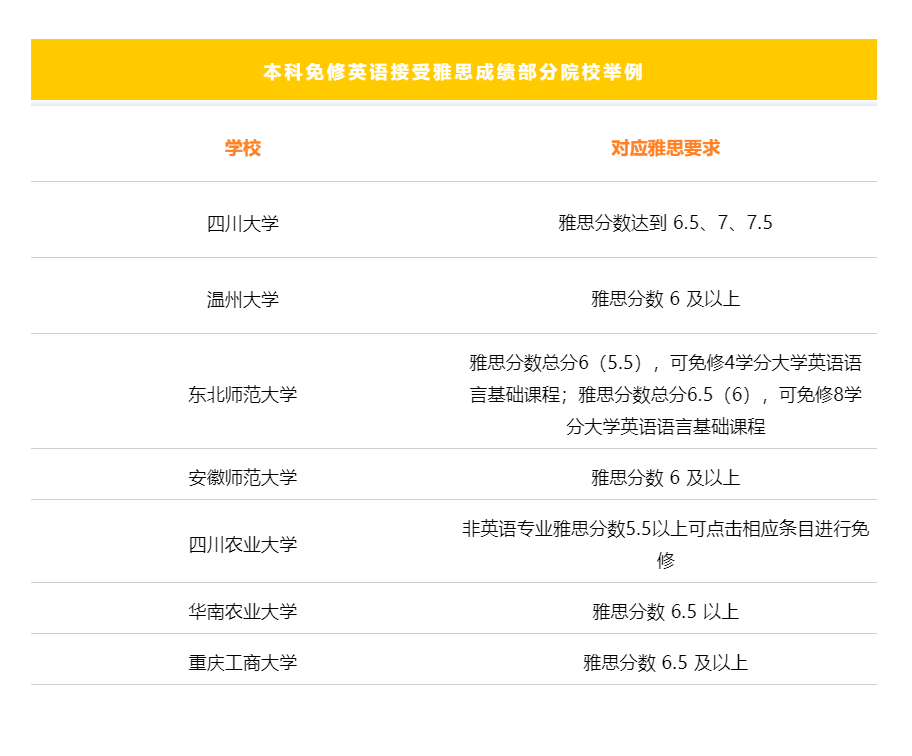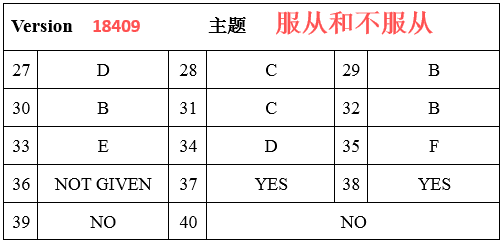为什么我整篇文章都读懂了但题目就是做不对?这是很多人都有的疑惑,下面小编给大家带来了 雅思阅读为何自认为读懂全文却做不对题目,希望能够帮助到大家,下面小编就和大家分享,来欣赏一下吧。
雅思阅读为何自认为读懂全文却做不对题目?
之前看过一个视频,就是心理学上非常著名的“看不见的黑猩猩实验”(the invisible gorilla)。实验对象需观看一小段短片,片中穿着白色和黑色球衣的两队运动员在向对方球队传球。实验对象的唯一任务,就是计算白色球衣队员传球的次数。
在影片中间,一个装扮成大猩猩的人走进人群中,对着镜头敲打自己的胸膛,停留了八九秒,然后离开。场景背后的幕布颜色也在实验过程中逐渐变为金色,在大猩猩登场之后,黑衣球队一位球员退场。
但令人惊奇的是,几乎一半的实验对象未能发现大猩猩的存在。追踪实验对象目光转动痕迹的眼动仪测量结果显示,那些声称没看到大猩猩的人,大多数目光也曾停留在它身上——他们“看到”了大猩猩,却没能“看见”。
主导这场实验的哈佛大学心理学教授西蒙斯与查布里斯后来将实验结果撰写成一本心理学著作《看不见的大猩猩:无处不在的六大错觉》,书中对此得出的结论是:人类真正体验到的世界远少于他们所感知到的世界。也就是说,人脑会自动忽略它认为并不需要的东西,而选择性地记住那些它认为重要的东西。
除了选择性记忆之外,还有一个记忆错觉理论。
911事件发生后包括美国总统小布什在内的很多人都曾在采访中栩栩如生地描绘那一天发生的场景,然而,事实却证明他们的记忆内容与真实情况大相径庭。有些人会把一件实际发生在亲友身上的事情套在自己头上,却信誓旦旦宣称确有此事。
这些都是由记忆错觉导致的。事实上,我们记忆的信息并不是现实的复制品,每次回忆都是一个信息重新整合的过程,受到信仰、喜好、心情等个体主观意识的左右。留在脑海中的也许不再是事件本身,而是被大脑重新塑造后的场景。
回到阅读理解中来,刚刚提到的问题就很好解释了。实际上你并没有真正读懂整篇文章,在阅读过程中人脑会选择性地记住那些它认为有用的信息,比如各种数字,可能会出现在选择题中的句子等,而选择性地忽略那些“看起来不那么重要“的东西,比如读不懂的长难句,理解模糊的概念,模棱两可的单词。
也就是说,一篇文章你可能只看懂了大部分(90%),而有剩下的10%没看懂。但人的记忆模式会自行对文章中那些看不懂的部分进行拼接加工改造解释,以使得它们看起来有意义,符合逻辑。这个时候你就会产生“我看懂了文章”这种错觉。
而文章中被强行解释的10%的信息,可能就是决定你选择题能不能做对的关键。
下次你不妨可以尝试一下:找一篇带有准确译文的题目,读完英文后做选择题,然后再一句一句对照中文译文,这个时候你很可能会发现其实自己没有并读懂文章,只是漏掉细节而不自知而已。想象一下,如果一开始读的是中文译文,那么选择题还会做错吗?
解决这种问题的方法没有别的,只能不断提高自己的阅读理解能力,也就是说,要多读,增强词汇功底,强化语法——就像上面提到的那些建议一样,努力让读英文的过程越来越流畅自然,这样你阅读理解的准确率才会不断提高。
雅思阅读无限仿真模拟题详解:New Ways of Teaching History
New Ways of Teaching History
In a technology and media-driven world, it's becoming increasingly difficult to get our students’ attentions and keep them absorbed in classroom discussions. This generation, in particular, has brought a unique set of challenges to the educational table. Whereas youth are easily enraptured by high-definition television, computers, iPods, video games and cell phones, they are less than enthralled by what to them are obsolete textbooks and boring classroom lectures. The question of how to teach history in a digital age is often contentious. On the one side, the old guard thinks the professional standards history is in mortal danger from flash-in-the-pan challenges by the distal that are all show and no substance. On the other Side, the self-styled “disruptors” offer over-blown rhetoric about how digital technology has changed everything while the moribund profession obstructs all progress in the name of outdated ideals. At least, that's a parody (maybe not much of one) of how the debate proceeds. Both supporters and opponents of the digital share more disciplinary common ground than either admits.
When provided with merely a textbook as a supplemental learning tool, test results have revealed that most students fail to pinpoint the significance of historical events and individuals. Fewer still are able to cite and substantiate primary historical sources. What does this say about the way our educators are presenting information? The quotation comes from a report of a 1917 test of 668 Texas students. Less than 10 percent of school-age children attended high school in 1917; today, enrollments are nearly universal. The whole world has turned on its head during the last century but one thing has stayed the same: Young people remain woefully ignorant about history reflected from their history tests. Guess what? Historians are ignorant too, especially when we equate historical knowledge with the "Jeopardy" Daily Double. In a test, those specializing in American history did just fine. But those with specialties in medieval, European and African history failed miserably when confronted by items about Fort Ticonderoga, the Olive Branch Petition, or the Quebec Act — all taken from a typical textbook. According to the testers, the results from the recent National Assessment in History, like scores from earlier tests, show that young people are "abysmally ignorant" of their own history. Invoking the tragedy of last September, historian Diane Ravitch hitched her worries about our future to the idea that our nation's strength is endangered by youth who do poorly on such tests. But if she were correct, we could have gone down the tubes in 1917!
There is a huge difference between saying "Kids don’t know the history we want then to know" and saying "Kids don't know history at all." Historical knowledge burrows itself into our cultural pores even if young people can't marshal it when faced by a multiple choice test. If we weren’t such hypocrites (or maybe if we were better historians) we'd have to admit that today's students follow in our own footsteps. For too long we've fantasized that by rewriting textbooks we could change how history is learned. The problem, however, is not the content of textbooks but the very idea of them. No human mind could retain the information crammed into these books in 1917, and it can do no better now. If we have learned anything from history that can be applied to every time period, it is that the only constant is change. The teaching of history, or any subject for that matter, is no exception. The question is no longer whether to bring new technologies into everyday education; now, the question is which There is a huge difference between saying "Kids don’t know the history we want then to know" and saying "Kids don't know history at all." Historical knowledge burrows itself into our cultural pores even if young people can't marshal it when faced by a multiple choice test. If we weren’t such hypocrites (or maybe if we were better historians) we'd have to admit that today's students follow in our own footsteps. For too long we've fantasized that by rewriting textbooks we could change how history is learned. The problem, however, is not the content of textbooks but the very idea of them. No human mind could retain the information crammed into these books in 1917, and it can do no better now. If we have learned anything from history that can be applied to every time period, it is that the only constant is change. The teaching of history, or any subject for that matter, is no exception. The question is no longer whether to bring new technologies into everyday education; now, the question is which technologies are most suitable for the range of topics covered in junior high and high school history classrooms. Fortunately, technology has provided us with opportunities to present our Civil War lesson plans or our American Revolution lesson plans in a variety of new ways.
Teachers can easily target and engage the learners of this generation by effectively combining the study of history with innovative multimedia- PowerPoint and presentations in particular can expand the scope of traditional classroom discussion by helping teachers to explain abstract concepts while accommodating students.unique learning styles. PowerPoint study units that have been pre-made for history classrooms include all manner of photos, prints, maps, audio clips, video clips and primary sources which help to make learning interactive and stimulating. Presenting lessons in these enticing formats helps technology-driven students retain the historical information they'll need to know for standard exams.
Whether you are covering Revolutionary War lesson plans or World War II lesson plans, PowerPoint study units are available in formats to suit the needs of your classroom. Multimedia teaching instruments like PowerPoint software are getting positive results the world over, framing conventional lectures with captivating written, auditory and visual content that helps students recall names, dates and causal relationships within a historical context.
History continues to show us that new times bring new realities. Education is no exception to the rule. The question is not whether to bring technology into the educational environment. Rather, the question is which technologies are suitable for U.S. and world history subjects, from Civil War lesson plans to World War II lesson plans. Whether you’re covering your American Revolution lesson plans or your Cold War lesson plans, PowerPoint presentations are available in pre-packaged formats to suit your classroom's needs.
Meanwhile, some academic historians hold a different view on the use of technology in teaching history. One reason they hold is that not all facts can be recorded by film or videos and literature is relatively feasible in this case .Another challenge they have to be faced with is the painful process to learn new technology like the making of PowerPoint and the editing of audio and video clips which is also reasonable especially to some elderly historians.
Question
Reading this passage has eight paragraphs, A- G
Choosing the correct heading for paragraphs A- G from the list of heading below
Write the appropriate number, i- x, in boxes 28-34 on your answer sheet
List of Headings
i unavoidable changing facts to be considered when picking up technology means
ii A debatable place where the new technologies stand in for history teaching
iii Hard to attract students in traditional ways of teaching history
iv Display of the use of emerging multimedia as leaching tools
v Both students and professionals as candidates did not produce decent results
vi A good concrete example illustrated to show how multimedia animates the history class
vii The comparisons of the new technologies applied in history class
viii Enormous breakthroughs in new technologies
ix Resistance of using new technologies from certain historian
x Decisions needed on which technique to be used for history teaching instead of improvement in the textbooks
28 Paragraph A
29 Paragraph B
30 Paragraph C
31 Paragraph D
32 Paragraph E
33 Paragraph F
34 Paragraph G
Question 35-37
Do the following statements agree with the information given in Reading Passage?
In boxes 35-37 on your answer sheet, write
YES if the statement is true
NO if the statement is false
NOT GIVEN if the information is not given in the passage
35 Modem people are belter at memorizing historical information compared with their ancestors.
36 New technologies applied in history- teaching are more vivid for students to memorize the details of historical events.
37 Conventional ways like literature arc gradually out of fashion as time goes by.
Question 38-40
Complete the following summary of the paragraphs of Reading Passage, using more than three words from the Reading Passage for each answer.
Write your answers in boxes 38-40 on your answer sheet.
Contemporary students can be aimed at without many difficulties by integrating studying history with novel. ..38.... Conventional classroom discussion is specially extended by two ways to assist the teachers to interpret ...39... and at the same time retain students' distinct learning modes. PowerPoint study units prepared beforehand comprising a wide variety of elements make ...40.... learning feasible. Combined classes like this can also be helpful in taking required tests.
雅思阅读为何自认为读懂全文却做不对题目
上一篇:雅思阅读中误解了的词汇
下一篇:返回列表






